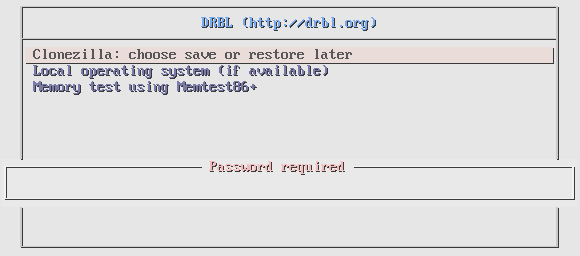The Business Value of Carrier-Grade NFV Infrastructure
 A new ACG Research paper focuses on topics covering carrier-grade NFVi solutions, performance, and availability advantages over enterprise-grade versions.
A new ACG Research paper focuses on topics covering carrier-grade NFVi solutions, performance, and availability advantages over enterprise-grade versions.
AT&T Chooses VeloCloud to Deliver SD-WAN
 VeloCloud also joins the AIC ecosystem.
VeloCloud also joins the AIC ecosystem.
HPE, Dell & Cisco Lead Cloud Infrastructure Sales
 Non-cloud infrastructure, meanwhile, is on the decline.
Non-cloud infrastructure, meanwhile, is on the decline.
Hacking DRBL Client PXE Boot Password
In a previous tutorial I showed installation of Clonezilla Server Edition on Ubuntu using my own Bash script. We configured PXE (Pre eXecution Environment)) password for clients so when the clients booted a password had to be entered to startup. This tutorial explains two different ways how to get and crack the PXE boot password.

Picture 1 - Client Requires to Enter PXE Password During Startup
First, we should mention some facts. The PXE client password is stored in plain text in a configuration file /etc/drbl/drblpush.conf. The password is secretpassword and it can be found in a dictionary rockyout.txt.
![]()
Picture 2 - Plain Text PXE Client Boot Password
The same PXE client password is stored as a hash in a file /tftpboot/nbi_img/prelinux.cfg/default.
![]()
Picture 3 - PXE Client Boot SHA-1 Base64 Encoded Salted Hash
The hash is created by utility /usr/sbin/sha1pass on DRBL server. It is a Perl script which takes two arguments from STDIN - a password and salt and it creates SHA-1 base64 salted hash.
![]()
Picture 4 - Perl Script fo Generating Hash from Password and Salt
Explanation:
- $4$ - SHA-1 base64 encoded salted hash
- 2mNryVVj - salt
- WIWlkNc6cA9+eQqcf9xU0d5IvVQ - hash
They are several methods how to obtain PXE boot Continue reading